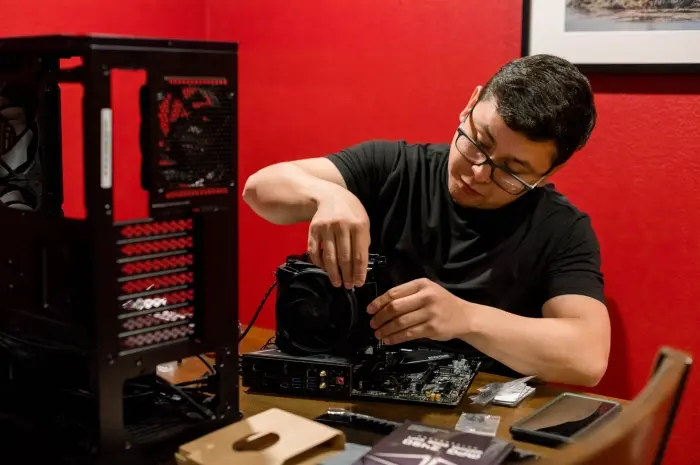Learn how to assemble a cost-effective gaming PC that doesn’t sacrifice performance, with our detailed guide covering everything from choosing components to setup.
Building a gaming PC can be an exciting venture, especially when you manage to do it within a budget without compromising on performance.
The key to building a budget-friendly gaming PC is knowing where you can save money and where you need to invest.
This article will guide you through each step of assembling a gaming computer that balances cost and performance, ensuring you get the best bang for your buck.
1. Setting Your Budget
Before you begin picking parts, it’s important to set a realistic budget. Determine how much you can afford to spend on your PC and stick to it. A reasonable budget for a budget gaming PC is typically between $500 and $800.
This range allows you to purchase decent components that can handle most modern games at good settings.
2. Choosing the Right Processor (CPU)
The CPU is the heart of your PC. For a budget build, AMD’s Ryzen series offers great value for performance, often including more cores than their Intel counterparts at similar price points.
A Ryzen 3 or Ryzen 5, for example, strikes a good balance between cost and capability. Look for bundles or discounts during sales events like Black Friday to get the best deal.
3. Selecting a Suitable Graphics Card (GPU)
The GPU is critical for gaming performance. For budget builds, consider mid-range cards like the NVIDIA GTX 1650 or the AMD Radeon RX 570.
These cards offer good performance on most games at 1080p. Keep an eye on the second-hand market as well; previous generation cards can offer good value.
4. Motherboard Considerations
Choose a motherboard that matches your CPU and offers room for expansion. For most budget systems, a B-series chipset for AMD (like B450 or B550) or an H-series for Intel (like H310) will suffice.
Ensure it has enough USB ports, RAM slots, and the necessary PCI-e slots for your GPU and other peripherals.
5. Investing in Memory (RAM)
For modern gaming, 8GB of RAM is the absolute minimum, but 16GB is recommended for a smoother experience.
Look for deals on dual kits (2 x 8GB) as they often come cheaper than buying individual sticks. Speeds around 3000 MHz to 3200 MHz are ideal for a budget build.
6. Storage Solutions
A solid-state drive (SSD) will greatly improve your system’s responsiveness compared to a traditional hard drive.
A 250GB or 500GB SSD should be enough for your operating system and most played games. You can always add a larger HDD or another SSD later for additional storage.
7. Choosing the Right Power Supply Unit (PSU)
Don’t skimp on the power supply. A reliable PSU is crucial for system stability. Look for units that are 80 Plus Bronze certified or better.
Around 550 watts should be enough for most budget gaming builds, but adjust this based on your specific component needs.
8. Finding an Appropriate Case
The case doesn’t affect performance, so this is where you can potentially save the most. Look for a case that fits your motherboard form factor and has good reviews for airflow. Tool-less designs can also make the assembly easier.
9. Operating System and Software
For the operating system, Windows 10 is typically the best choice for compatibility with games, but you can save money by purchasing an OEM version or looking for discounts through educational programs.
Alternatively, consider free operating systems like Linux if you play games supported by it.
10. Assembling Your PC
Once you have all your components, the assembly process begins. Take your time, follow instructions carefully, and perhaps watch tutorial videos specific to your components. Proper thermal paste application on the CPU and ensuring all cables are managed well for airflow are key points not to overlook.
Building a budget gaming PC requires careful planning and a bit of savvy shopping, but the rewards are well worth the effort.
By prioritizing key components and looking for the best deals, you can assemble a machine that plays modern games well without breaking the bank.
Remember, upgrading individual components later as you save more money is always an option, making your budget PC a great starting point for entering into PC gaming.
